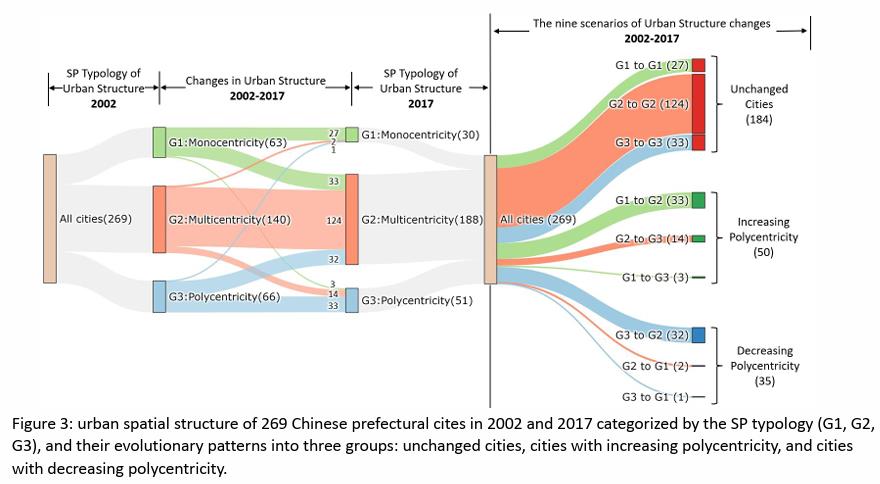The spatial‐temporal evolution of urban development patterns in Chinese cities: Dynamics and interpretations
Published in Growth and Change, 2024


This paper examines the spatial‐temporal evolution of urban spatial structure across 269 Chinese prefectural cities from 2002 to 2019. Our analysis identifies a consistent trend toward amore polycentric configuration in the 25 Chinese mega‐cities during this period, primarily due to population growth and asupportive policy environment. However, the evolutionary pathways of small‐ and medium‐sized cities unfolded in a rather complex and diverse manner, with some becoming more polycentric while the majority adhering to amonocentric trajectory. In these cases, population growth is usually associated with amore monocentric pattern, characterized by rapid expansion of the urban core, while polycentric development is primarily attributed to specific spatial policies that support the emergence of subcenters. We conclude that polycentric development, while potentially suitable for mega‐cities to alleviate diseconomies of scale, may be less appropriate for small‐ and medium‐sized cities as it may constrain growth associated with agglomeration economies. We suggest that the development and implementation of regional spatial policy should be considerate of local historical paths and contextual factors. Finally, we propose astylized framework to more accurately reflect the diverse and complex nature of urban spatial structure evolution in Chinese prefectural cities.
Recommended citation: Li, Wenzheng, and Stephan Schmidt. "The spatial‐temporal evolution of urban development patterns in Chinese cities: Dynamics and interpretations." Growth and Change 55, no. 2 (2024): e12722. http://wenzhengli-etal.github.io/files/EPB.pdf
